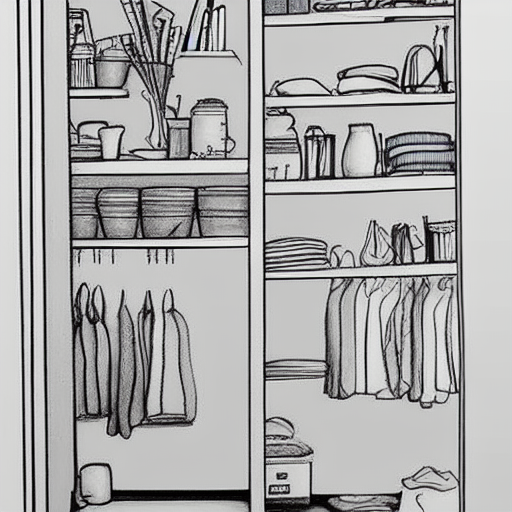To make a small space feel bigger, you’ll need to let natural light in. However, most small spaces have limited windows. If that’s the case, it’s helpful to use mirrors and white paint to reflect light. Another great idea is to use sheer window treatments that let light filter through. You can also go with brighter paint colors to keep the room feeling airy.
Furniture scale
When choosing furniture for a small space, you need to pay close attention to scale. Furniture that is too large for the room can make it appear cramped and uncomfortable. On the other hand, furniture that is too small can be just as uncomfortable. Therefore, it is essential to have an overall plan and color scheme before making your final purchase. This will help you avoid making a costly mistake.
A small room is best suited for small-scale furniture, but you should also consider the style of your existing furnishings. If you’re unsure of the right scale, make sure you consult a designer. They can help you determine the size of your furniture and offer advice and ideas. Some furniture designers will even provide free swatches for your new pieces.
Aside from size, another important factor to consider when choosing furniture is proportion. Proper proportion and scale will help make your room look bigger without making it too crowded. Make sure you leave enough space between pieces of furniture to prevent an overcrowded look. A good guideline to follow when choosing furniture is the length of the sofa.
When designing a small space, you must keep in mind that the visual weight of furniture is often different from its actual weight. Dark furniture, for example, seems heavier than light-colored furniture. Light-colored furniture with legs will appear to be lighter. Similarly, dark furniture with boxy upholstered pieces will appear larger than they actually are. You should choose furniture that won’t obstruct the view of the floor or the fireplace. A small marble-topped coffee table, however, is visually heavy but takes up very little visual space.
Color scheme
Small spaces require a different color scheme from larger rooms. Light colors are more enjoyable in small spaces, and a dark color scheme can make the room feel more cramped. Deep colors are also a good choice for smaller spaces, as they can help the space stand out, especially if the room lacks architectural elements.
A lively yellow color can instantly brighten up a room, making it an ideal color for a half bath or galley kitchen. Alternatively, navy blue can give a room a cozy cocoon effect and work as an accent wall for a neutral room. These colors are also ideal for the ceiling.
If you’re trying to decide on a color scheme for a small room, keep in mind that it can be hard to choose the perfect hue. Adding personal touches, light furniture and beautiful decor can make a room feel larger. Changing the color scheme of a room can give it a new life, and can be a great way to create a relaxed and serene space.
While some people prefer a monochromatic scheme, a more versatile color scheme is an analogous color palette. These palettes feature one primary color, and two or three accent colors, which can be applied in smaller pops of color. For these schemes, the primary color should make up about 70% of the room, with the secondary colors making up the remaining 30%.
Furniture placement
Furniture placement is an important issue to consider in a space with limited space. A small living room, for example, can benefit from furniture angled towards the walls to break up the space. This way, it will appear wider and more open. Also, it will be easier to maneuver around the space. You can also opt for lighter-colored pieces to add more visual space. Additionally, a small coffee table can be a great addition to the room, as it can double as extra storage space.
Measure the area carefully before placing furniture, including shelves. It is better to leave some space between shelves and the wall, as this will create depth and make the room appear larger. You should also take into account walkways, as you do not want to place furniture that blocks doorways and well-defined walkways.
Ideally, the sofa should be at the center of the room, and the other furniture items should surround it. If you don’t have enough space to place all of the items, you can place them around the center area. It is also a good idea to keep an open space in the middle of the room, which will make it look larger.
If you have a small living room, you should also focus on using accent pieces. These accent pieces can help draw attention to the room and lessen the focus on the layout. You can also consider wood furniture, which has been around for many centuries and is still a classic. If you can’t afford a traditional sofa, you should consider a bench seat instead.
Decluttering
Decluttering a small space can seem like a daunting task. However, it is possible to turn it into a space you love and use effectively. The first step is to identify items, label them and arrange them in an easily accessible manner. By doing this, you will be able to find items and reduce the amount of clutter in the room.
After you have decluttered a small space, it can be quite satisfying to see the difference. You can also declutter whole rooms with the same technique. For example, you can start by decluttering your bedroom and then move to your laundry room. Once you have decluttered your bedroom, it will be easier to tackle the rest of the room.
The next step is to decide what should be donated or thrown out. You may find that certain items are sentimental but are not useful. In such a case, it would be best to donate them. Keep in mind that you cannot keep something that has not been used in a year. Also, you shouldn’t hold on to items from a previous season, hobby, or lifestyle.
One way to avoid getting frustrated with decluttering efforts is to assign a home for every item you own. Assigning a home to your stuff can help prevent you from getting overwhelmed by the sheer amount of stuff you have. You must also make sure that everything has a place, and if it doesn’t, it will only add to the clutter.
Adding storage
Adding storage to small spaces can be tricky. You may not have enough space to add built-ins, but you can squeeze in extra storage in odd spots. For example, the three inches between a washer and dryer can be prime storage space. You can also use shelving units, vertical cabinets, and extra hooks to organize your items. Adding storage to small spaces can help you keep a clutter-free home, even if your space is limited.
Small-space living has many advantages, including ease of cleaning and finding misplaced items, but it also has its drawbacks. By adding clever storage ideas to small spaces, you can make the most of your square footage and maximize your storage. You can even turn objects like ottomans and art into additional storage space.












